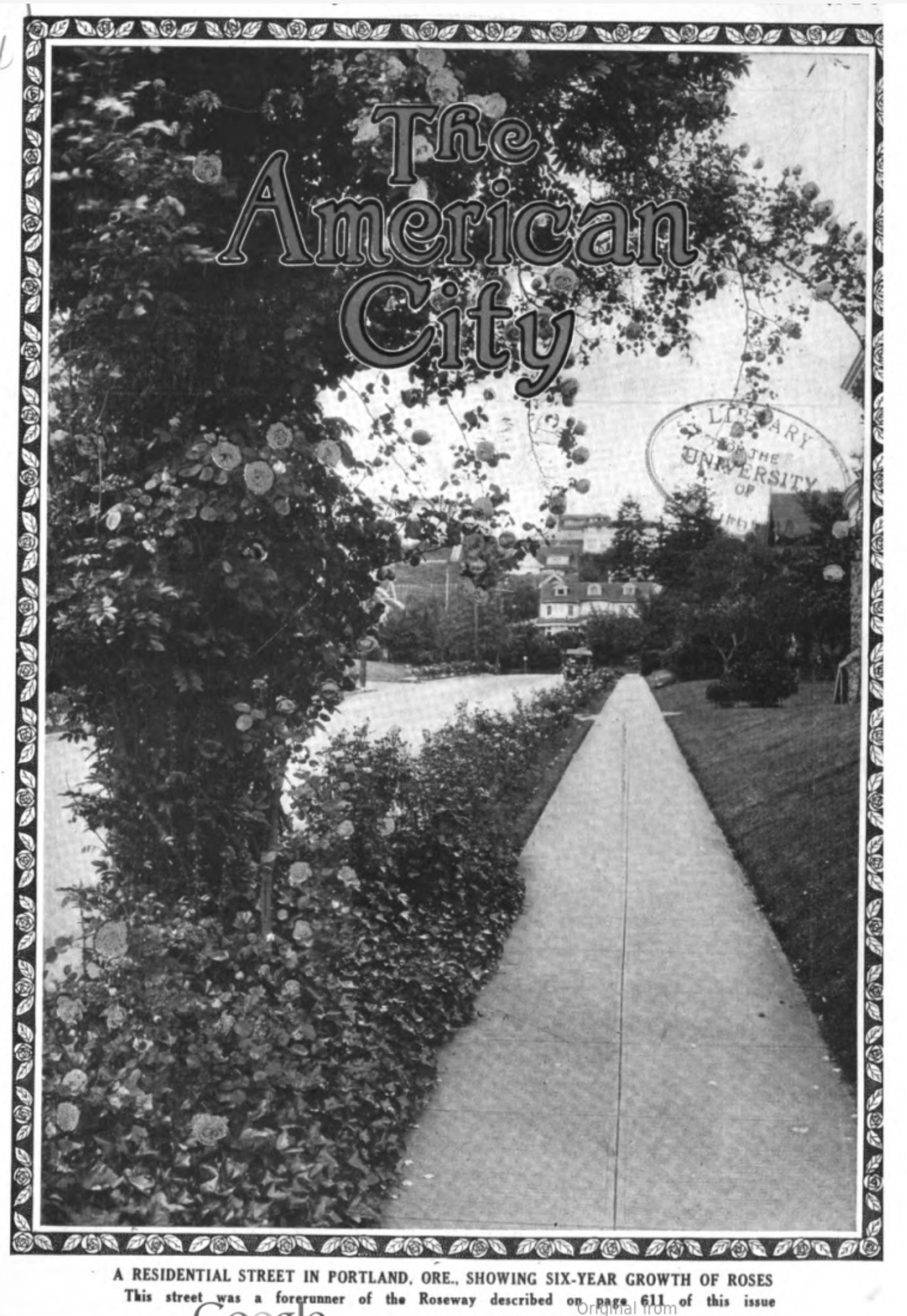Avenue of roses.
Holmes, Florence. "Avenue of roses." American City 26, no. 6
(June 1922): 611.
[https://library-projects.providence.edu/rosarium/view?docId=tei/rg0077.xml]

As characteristic as the hawthorn hedgerows of England, the cherry-blossom ways of Japan and the stately palms of California is the four-mile rose avenue of Portland, Ore., now in the making. A similar street is shown on the cover of this issue. The lovely Caroline Testout and the dainty Dorothy Perkins are the beauties of the rose world which make Portland’s rose boulevard a highroad of charm in June.
Early in January, 1920, the Portland Ad Club put before the public a proposition of a roseway along four miles of the Sandy Boulevard, the connecting link between the city and the famous Columbia River Highway. Civic clubs and city officials interested themselves in the project, and the plans for the rose-bowered avenue are now being realized. The nursery force of the Bureau of Parks set out 21,000 Caroline Testouts and 4,500 Dorothy Perkins cuttings to be used on the roseway, and others are to be grown by organizations and individuals at various times.
The choice of Caroline Testout has been the outgrowth of a gradual increase in the use of this profuse bloomer. Portland has held an annual rose show in June every year since 1889, and in all these years the rose growers of the city have been endeavoring to produce a rose that will qualify as the official rose of Portland. In 1908 the Rose Festival, supplementing the rose show, was instituted and held in June, the gala time of the City of Roses. The official Portland rose has not yet been developed, but in lieu thereof, by common consent, the Caroline Testout has been serving.
The roseway is the culmination of many plans and of much interest in Portland’s peculiar adaptability to rose growing. The name "Rose City" was first given to the city 25 years ago by the Presbyterian General Assembly, which was in session here. Later, in 1905, at the Lewis and Clark Exposition, the rose was declared the queen of flowers and great bouquets of the blossoms were presented to the women visitors at the fair on certain days. The interest in rose culture was continued, being sponsored by the Portland Rose Society and other organizations and by individual residents. "Plant a Rose" posters were pasted on automobile windshields two years ago to further the rose idea.
Rose enthusiasts in all parts of the country took a new interest in Portland when the International Rose Test Garden was established in Washington Park in 1917. This was made an official test garden of the American Rose Society, and new roses from all parts of the United States and Europe were entered in the testing plats. At the June Rose Festival awards are made for the finest blooms of the season. All species entered in the Test Garden are new and unexploited commercially. The Rose Test Garden is a unit of the large decorative rose garden now being built in Washington Park, where eventually there will be botanical collections, historical gardens and other features incorporated in one comprehensive design.
The Sandy Boulevard, which has been set aside as the Avenue of Roses, is a broad, straight road of few grades, running diagonally through a residence section of the city into an attractive rural section of fields and woods, until it joins the eastern division of the scenic Columbia River Highway. The roseway will be a fitting approach to the majestic river highway as well as a striking feature of the Rose City, when it is completed.
Under the direction of C. P. Keyser, Superintendent of the Bureau of Parks, the parkings were surveyed and the ground prepared for planting last fall. More than three thousand roses were set out at that time and many will be added this fall when the planting season opens.

